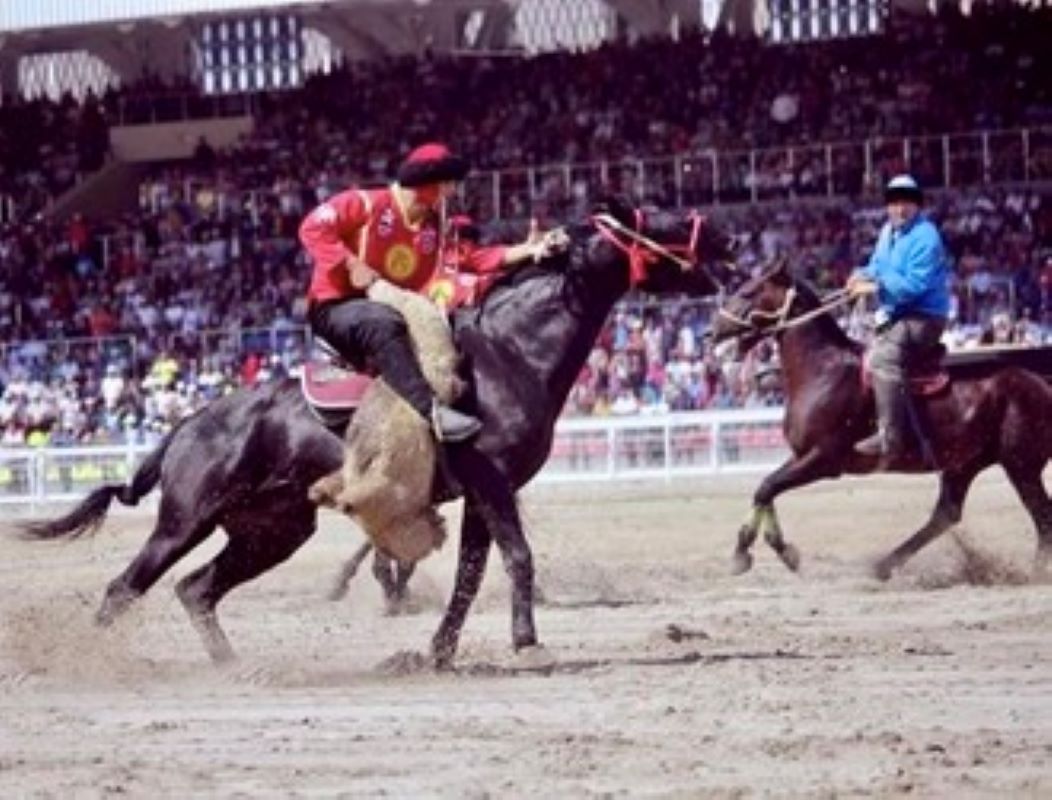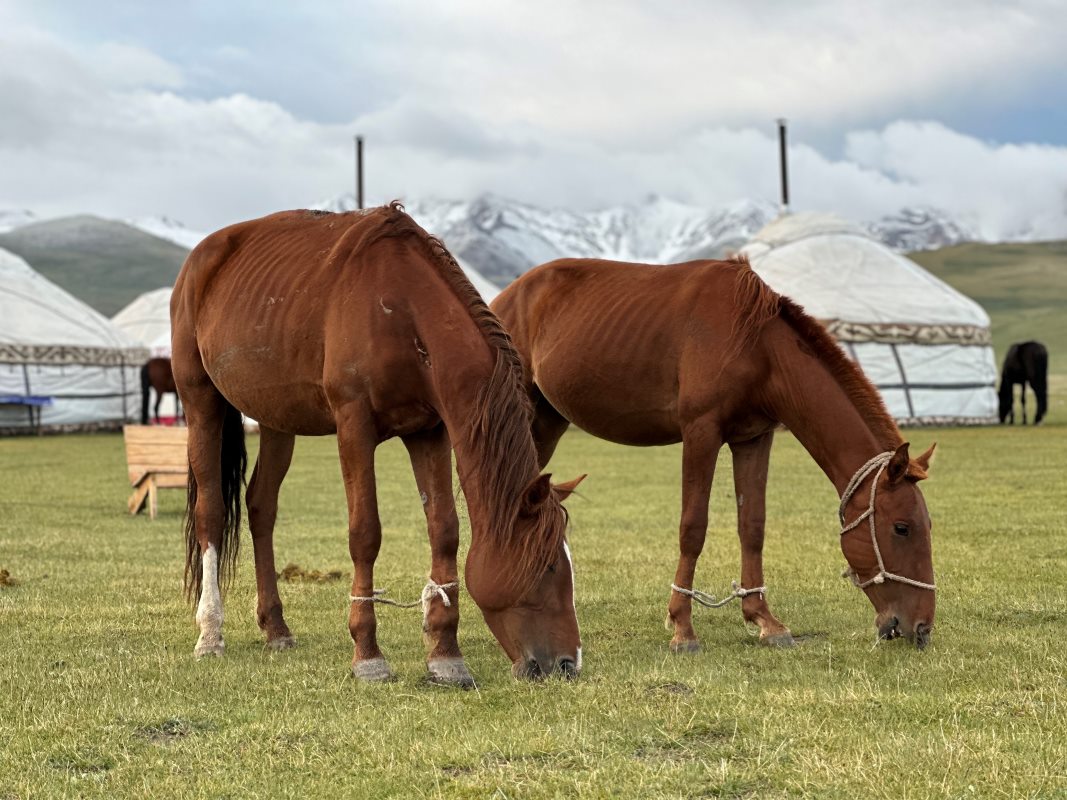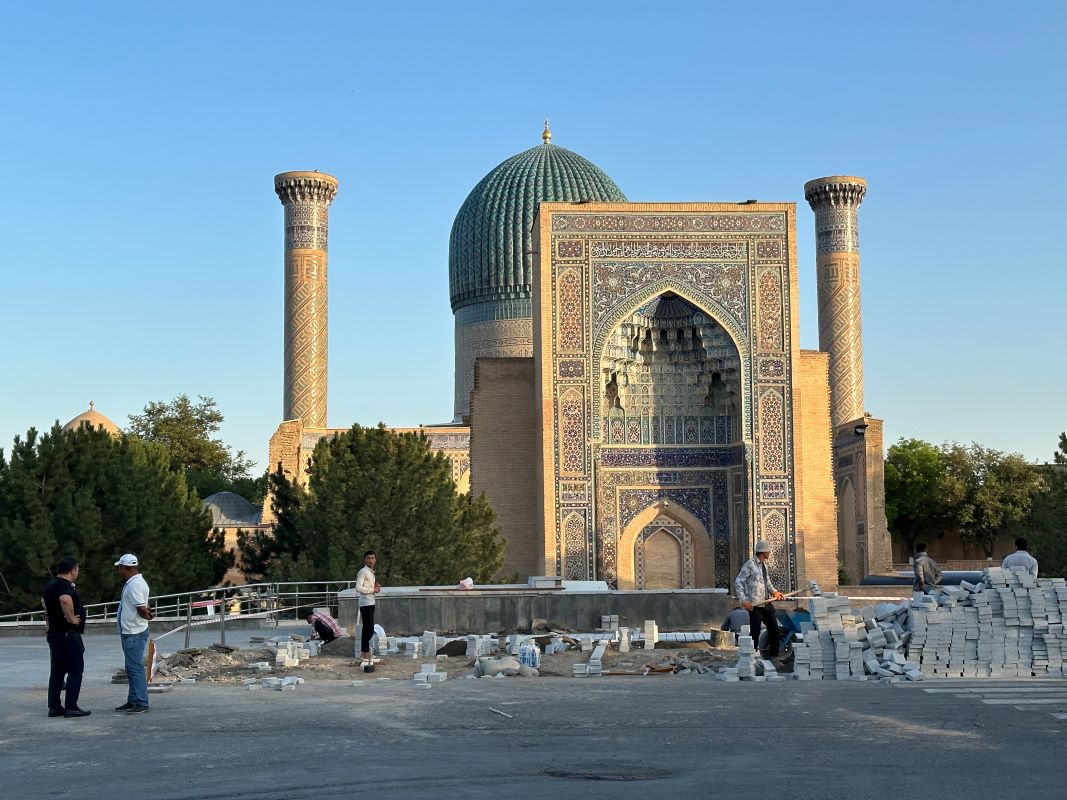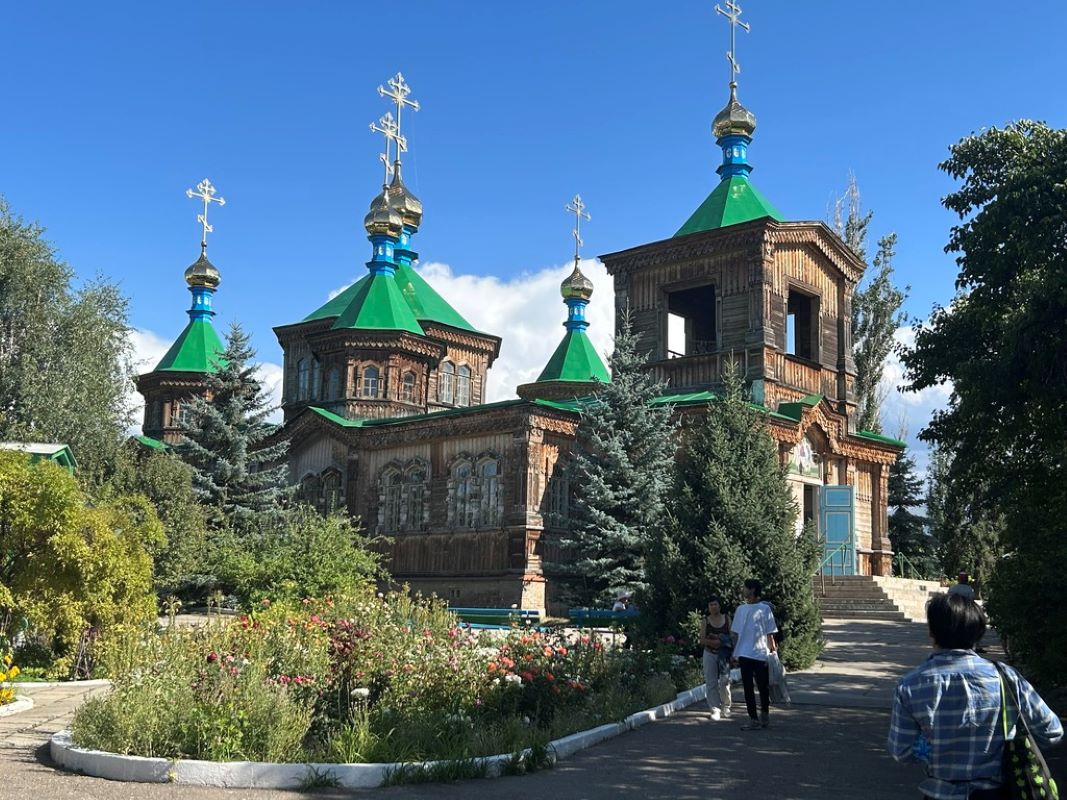Kok-boru is a symbiosis of horse racing and games. Players compete for the carcass of a goat. It is necessary not only to pick up the carcass, but also not to let the opponent capture it. In the sports version, the carcass must be thrown into the “cauldron” (gate) of the opposing team.
Kok-boru, kek-beryu, ulak, kokpar (Kyrgyz. kok-boru (literally “blue/blue wolf”, Russian. “gray wolf”), ulak-tartysh (goat-stealing) – have long been popular among Kyrgyz and other Asian peoples. Equestrian games. In Russian, the term goat wrestling is also used for the game of kok-boru and its analogue – buzkashi, but in reality the goal of the game is not to tear the carcass of a goat, but to take it away from the enemy and keep it for yourself.
The game is played according to other rules. For example, with a carcass you need to go to a certain place, for example, to your island, where the opponent does not have the right to take the carcass. The popular game “Alaman Ulak” is widespread, in which an unlimited number of players (up to 1000 or more) can participate. This game is often organized on holidays dedicated to important events. For example, parents can reward players with prizes at the birth of a long-awaited heir.
Today, a brigade of equestrian judges, consisting of three experienced riders, usually monitors the behavior of a horseman at sports competitions in kok-boru. The rules of kok-boru have changed over time and become less violent. Kok-boru is practiced in many regions of Central Asia and Russia.
Literally translated from the Turkic languages, “kok boru” means “blue wolf”. What does this have to do with wolves? The story about this was recorded by the Soviet ethnographer G.N. Simakov in the 1980s. “Kyrgyz elders have repeatedly told me about the method of hunting wolves, which is widespread among southern and northern Kyrgyz. Such an ancient way of hunting wolves is also interesting: after catching and killing a wolf, one rider put his carcass on his saddle, and other riders tried to take this carcass away from him. Thus, they, as they say, “made their way”, and did not drive at full speed towards the village. In the village, the carcass of the wolf was taken by those who caught up with him directly and killed him with a blow of a club”
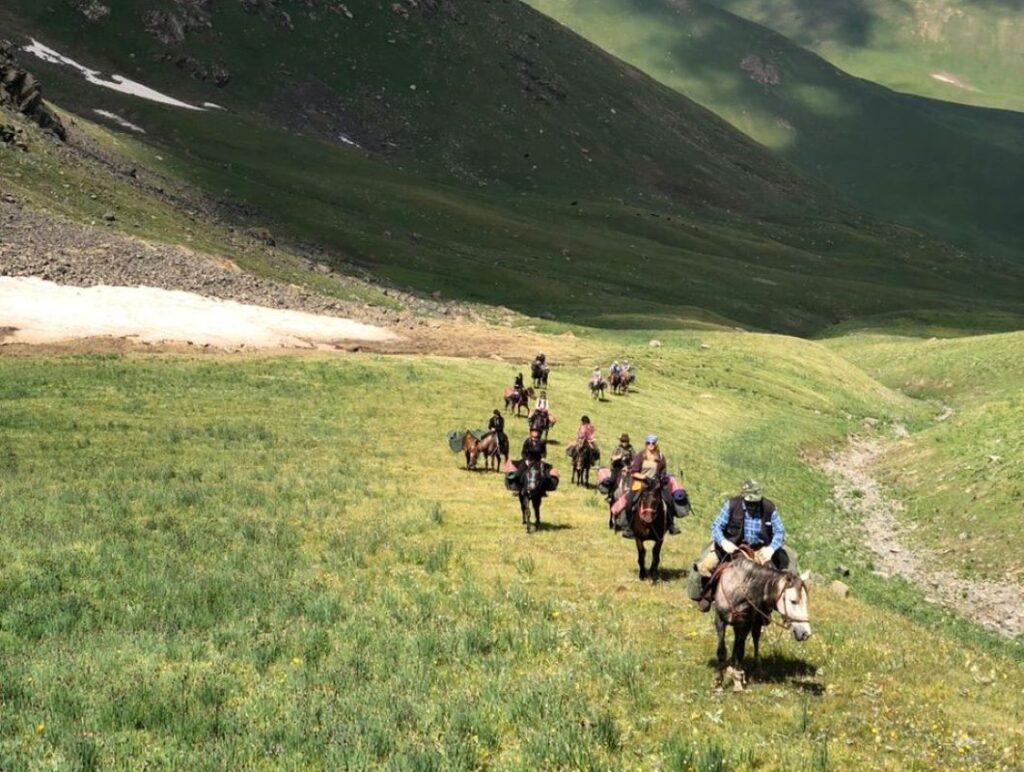
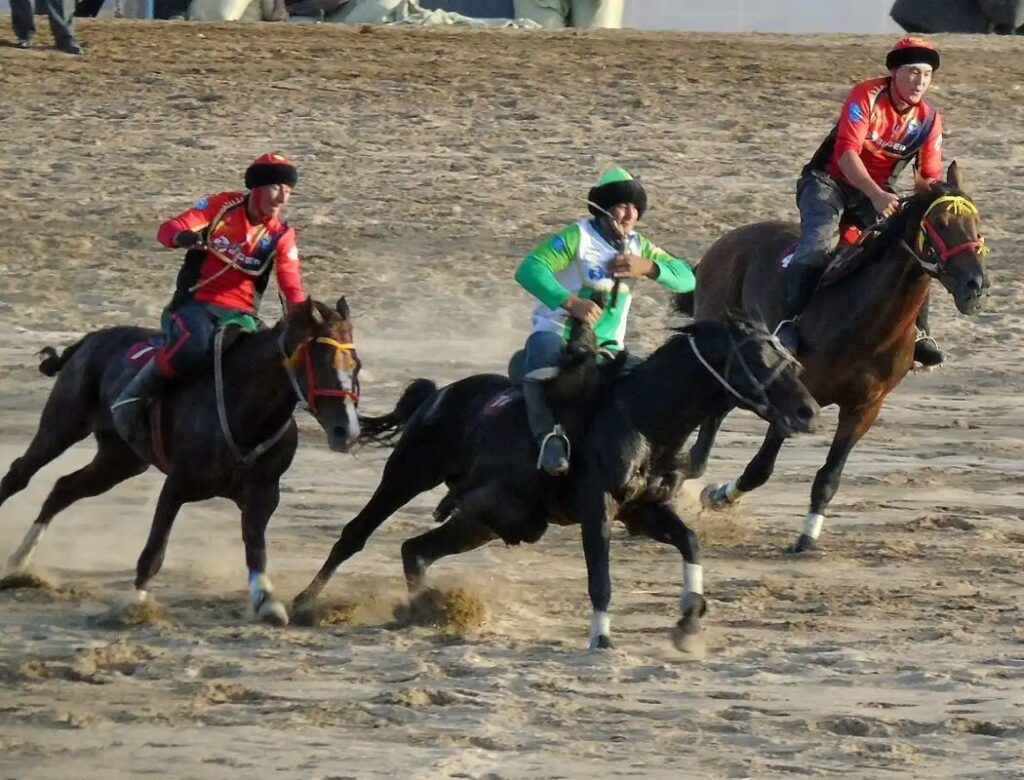
Another historical name of this game in Kyrgyzstan is “ulak tartysh” (harnessing goats). Chingiz Aitmatov in his story “Goodbye, Gulsars! (1966) calls this type of equestrian sport “goat breeding”. Goat-fighting is a kind of equestrian football, in which a decapitated goat carcass is used instead of a ball. Goats are useful because they have a long and strong coat and can be removed from a horse by the legs or skin.”
The goal of the game is to use the carcass of a goat and throw as many balls as possible into the opponent’s cauldron.
Participants are allowed to take the carcass of a goat from any point of the field, take it away from an opponent, pass it to a teammate or throw it, release it, take it under the leg, tuck it under the arm or between the legs of a horse, help a partner run with the carcass and throw it into the opponent’s goal. In the event of a rider or horse falling, the match is suspended and resumed after the reason for the suspension is eliminated. If the rider breaks the sideline, an out is declared.
In the past, kok-boru participants were allowed to use physical force, for example, to strike an opponent with a kamchi (leather whip), but in modern official competitions, the rules limit the possibilities of riders, and penalty points are awarded for non-compliance with these rules, up to disqualification or removal from the playing field. Hold the reins, detach the reins, grab the opponent’s arm or belt, arms, legs, stirrups, wave your hands, strike another rider or horse with the reins, saddle the carcass, get on the horse at a gallop, shout, talk, even after the carcass is thrown into the opponent’s cauldron. Continuation of the fight after the carcass is thrown into the opponent’s cauldron is prohibited.
A team can have from 8 to 12 riders and from 8 to 12 horses, but only four people from each team can participate in the game at the same time. Participants have the right to change or change to another horse. Teams fielding undeclared riders or horses lose the game;
Matches are played with the participation of four players from each team. During the match, teams have the right to change players during the match (i.e. without stopping the match);
The duration of the match is 60 minutes, it consists of three periods of 20 minutes each with a 10-minute break. The winner is the team that throws more goat carcasses into the opponent’s taiko mountain.
Game progress
The capture of carcasses and other techniques during the game are carried out in accordance with the rules of the game “Coco Boru”. The game continues without interruption until the carcass is thrown into the taiko cauldron by one of the teams or until one of the players grossly violates the rules of the game. In order for the score to be counted, the carcass must be properly thrown into the bream cauldron. If the carcass is on the edge, does not fall into the tai-cauldron or falls into the tai-cauldron, but jumps out of the tai-cauldron by inertia, then this is not considered a goal and points are not awarded. Players can throw the carcass without touching the ground with their feet in a fall. After the carcass gets into the cauldron and the referee counts it as a goal, the match starts anew from the center of the field.

